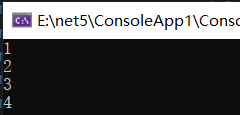如何在 C# 8 中使用 Index 和 Range
本文轉載自微信公眾號「 碼農讀書」,作者 碼農讀書 。轉載本文請聯系 碼農讀書公眾號。
C# 8 中有幾個比較好玩的新特性,比如下面的這兩個:System.Index 和 System.Range,分別對應著索引和切片操作,這篇文章將會討論這兩個類的使用。
System.Index 和 System.Range 結構體
可以用它們在運行時對集合進行 index 和 slice,下面就是 System.Index 結構體的定義。
- namespace System
- {
- public readonly struct Index
- {
- public Index(int value, bool fromEnd);
- }
- }
然后就是 System.Range 結構體的定義。
- namespace System
- {
- public readonly struct Range
- {
- public Range(System.Index start, System.Index end);
- public static Range StartAt(System.Index start);
- public static Range EndAt(System.Index end);
- public static Range All { get; }
- }
- }
使用 System.Index 從尾部向前對集合進行索引
在 C# 8.0 之前沒有任何方式可以從集合的尾部向前進行索引,現在你可以使用 ^ 操作符實現對集合的從后往前索引,如下代碼所示:
- System.Index operator ^(int fromEnd);
接下來用一個例子來理解該操作符的使用,考慮下面的string數組。
- string[] cities = { "Kolkata", "Hyderabad", "Bangalore", "London", "Moscow", "London", "New York" };
接下來的代碼片段展示了如何使用 ^ 運算符來獲取 cities 集合的最后一個元素。
- var city = cities[^1];
- Console.WriteLine("The selected city is: " + city);
下面是完整的可供參考的代碼:
- public static void Main(string[] args)
- {
- string[] cities = { "Kolkata", "Hyderabad", "Bangalore", "London", "Moscow", "London", "New York" };
- var city = cities[^1];
- Console.WriteLine("The selected city is: " + city);
- Console.ReadLine();
- }
使用 System.Range 來提取子序列
你可以使用 System.Range 從 array 或者 span 類型上提取子集合,下面的代碼展示了如何使用 range 和 index 來提取 string 的最后六個字符。
- class Program
- {
- public static void Main(string[] args)
- {
- string str = "Hello World!";
- Console.WriteLine(str[^6..]);
- Console.ReadLine();
- }
- }
接下來是一個如何從 array 上提取子集合的例子。
- public static void Main(string[] args)
- {
- int[] integers = { 0, 1, 2, 3, 4, 5, 6, 7, 8, 9 };
- var slice = integers[1..5];
- foreach (int i in slice)
- {
- Console.WriteLine(i);
- }
- Console.ReadLine();
- }
從圖中可以看出,輸出的數字為 1,2,3,4,即表示是一個 [) 的區間。
在 C#8 之前沒有這樣非常語義化的方式對集合進行 index 和 range,現在不一樣了,你可以使用 ^ 和 .. 這兩個語法糖,讓你的代碼更加干凈,可讀,易維護。
譯文鏈接:https://www.infoworld.com/article/3532284/how-to-use-indices-and-ranges-in-csharp-80.html

































